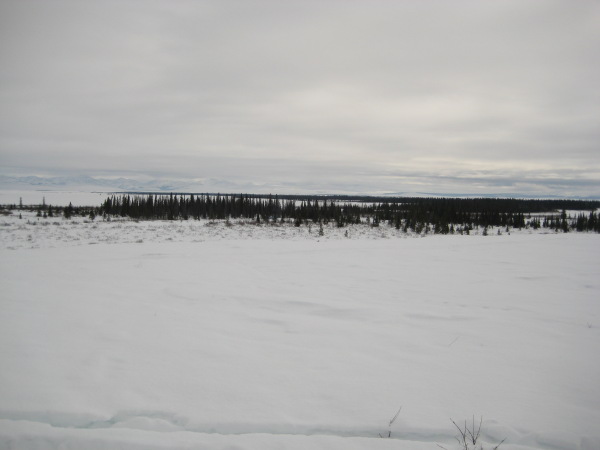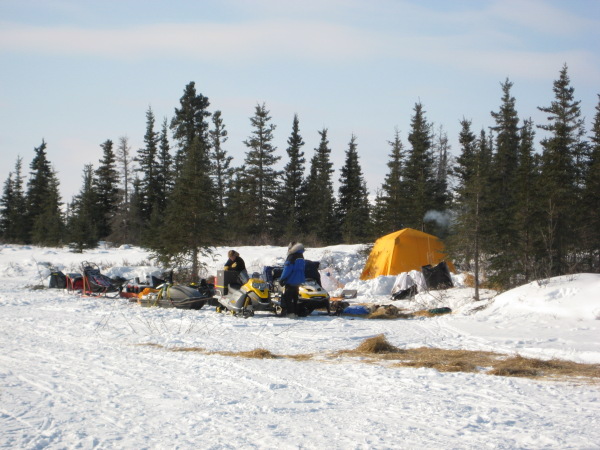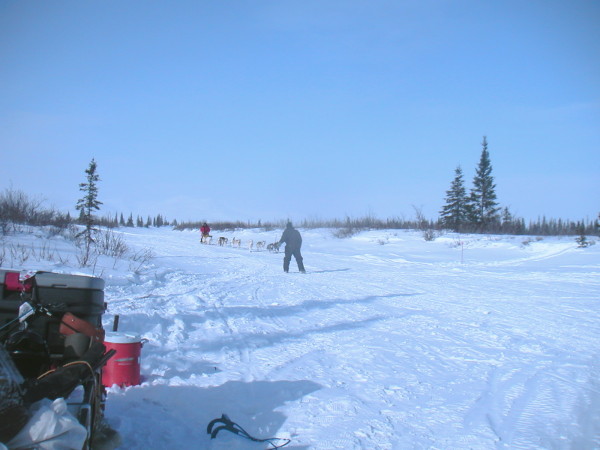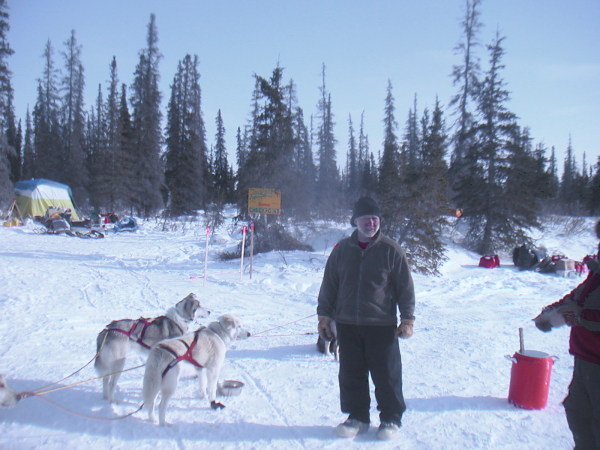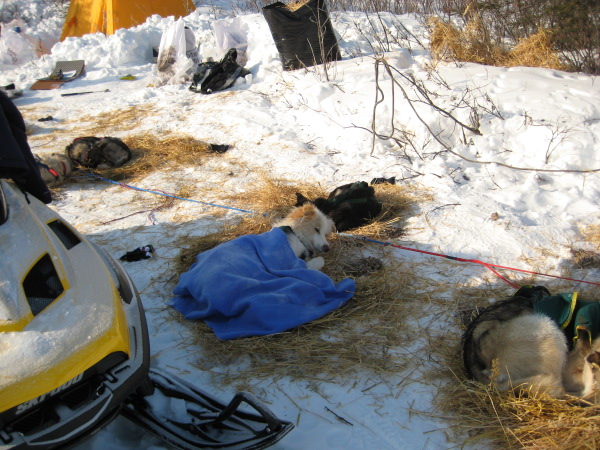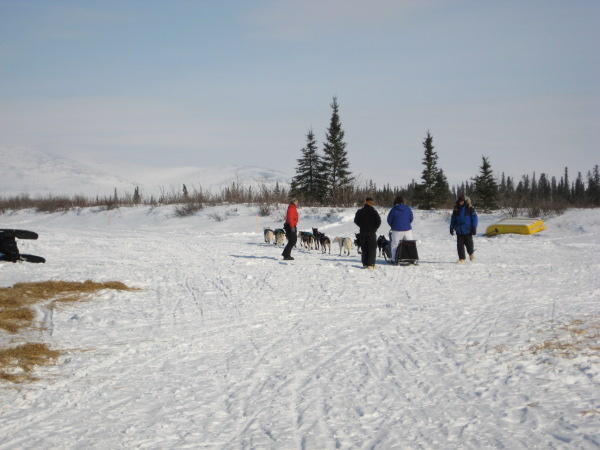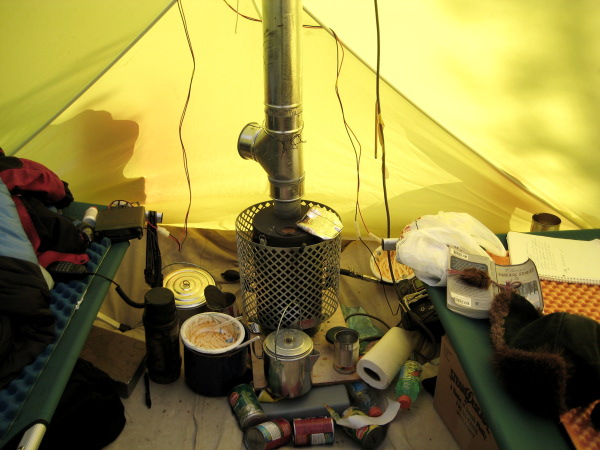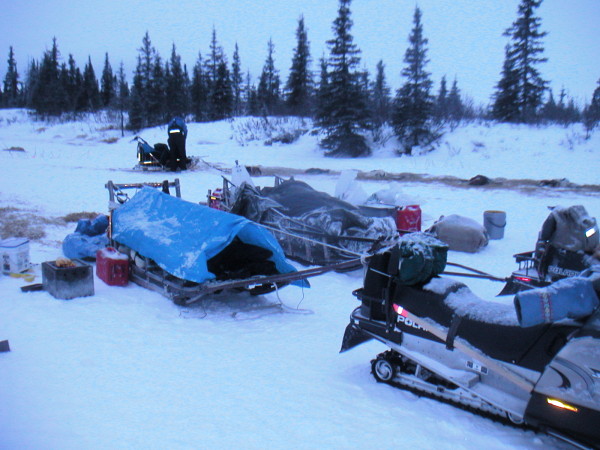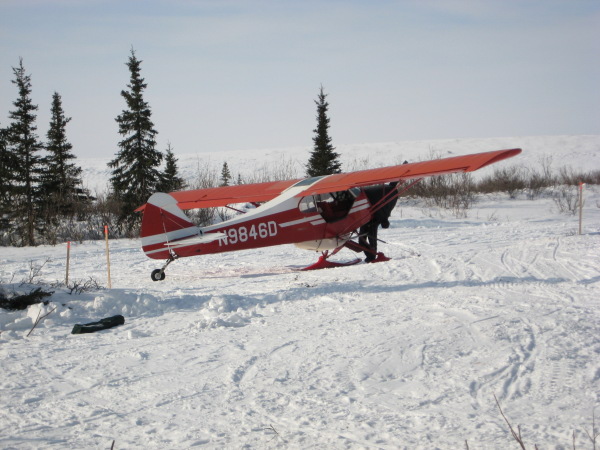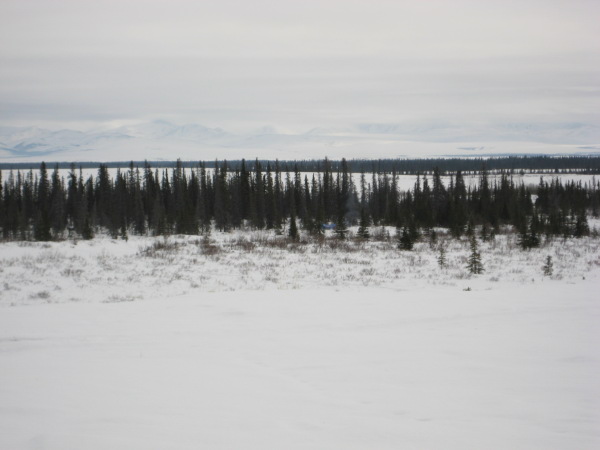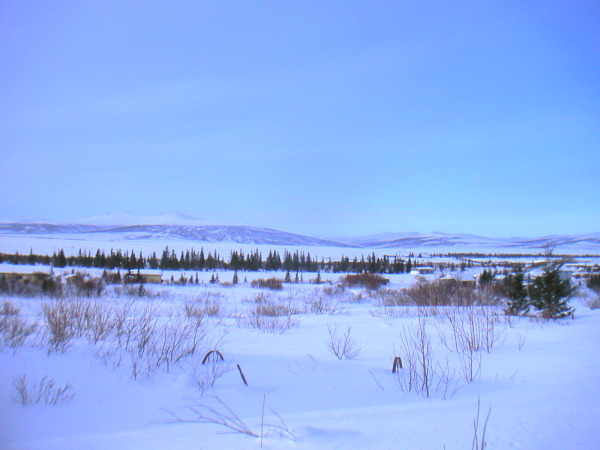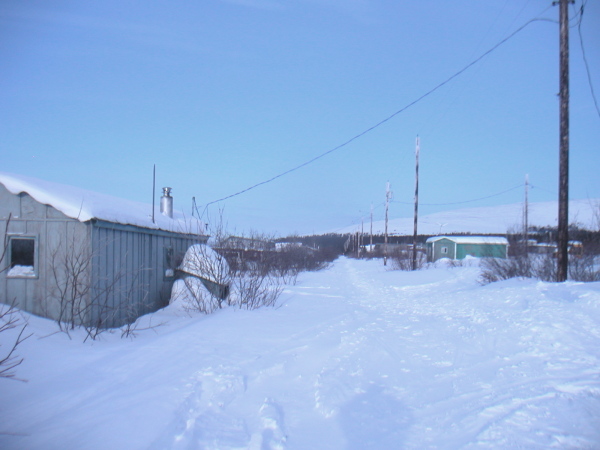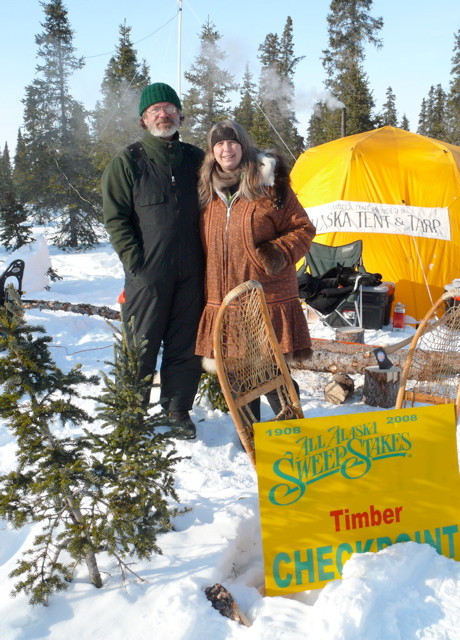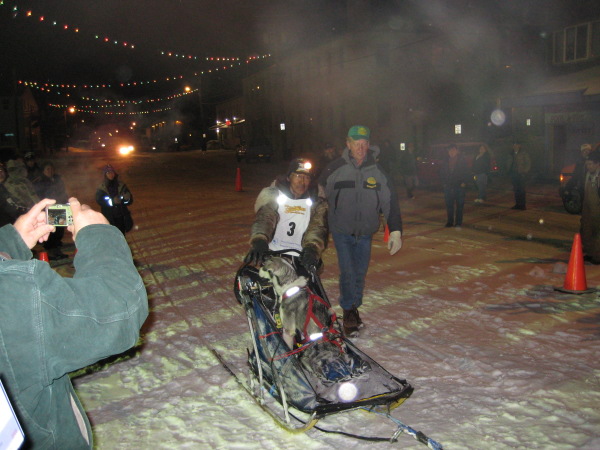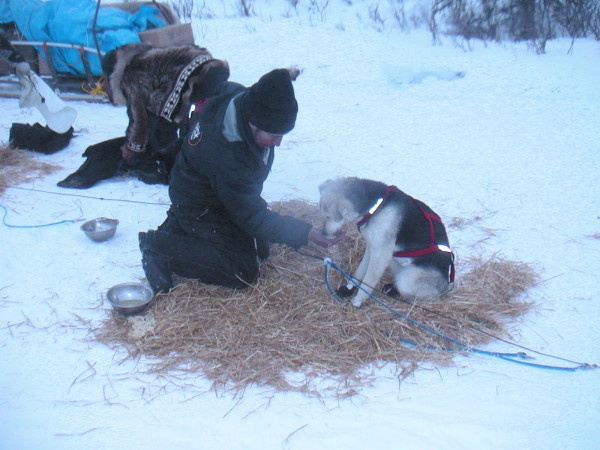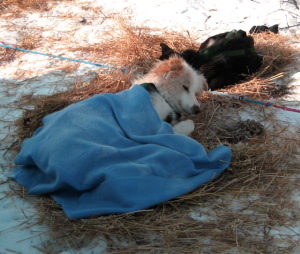Passing Behind Cape Nome [129]
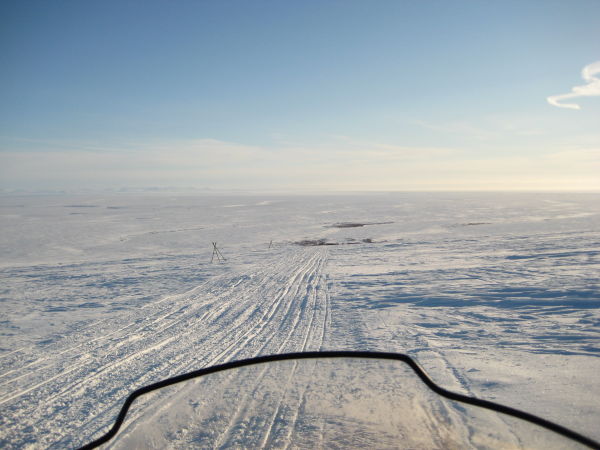
Photo Copyright © 2008 Ramon Gandia
Milepost 16
On the way to set up the Boston Checkpoint, we passed over the back of Cape Nome. Here we are looking down the hill and east. In the distance, Safety and Topkok can be discerned.
Fox River Interlude [137]
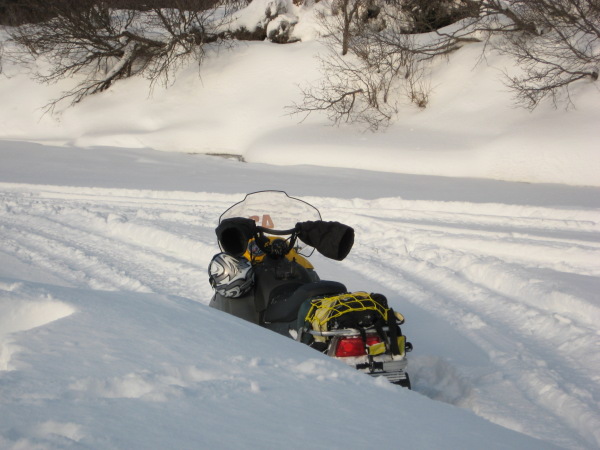
Photo Copyright © 2008 Ramon Gandia
Milepost 80
You have to understand that the AA Trail does not go over or across the Fox River. But we went that way, got stuck, shoveled, snowshoed and had all sorts of fun.
Kenny on Snowshoes! [139]
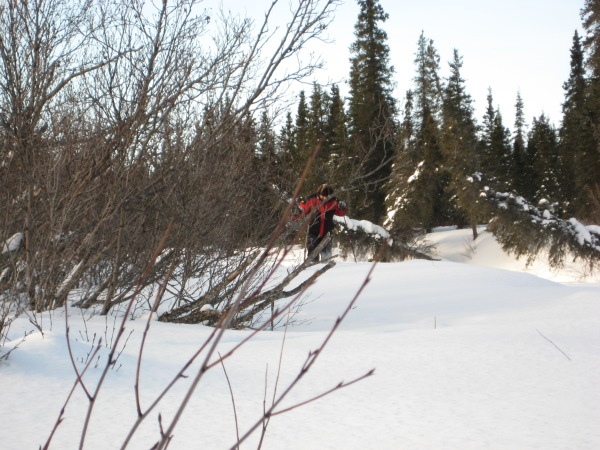
Photo Copyright © 2008 Ramon Gandia
Milepost 80
>This part of the Fox River has dark and deep woods. The snow was waist high and snowshoes were needed to stomp out a path thru the deep snow, along a crooked path. I did some of it, and got my machine unstuck and down to the river see previous photo. Then it was Kenny's turn to get some exercise on snowshoes. These were RedFeather 36's, with poles. The poles were absolutely essential!
Parked in Council [010]
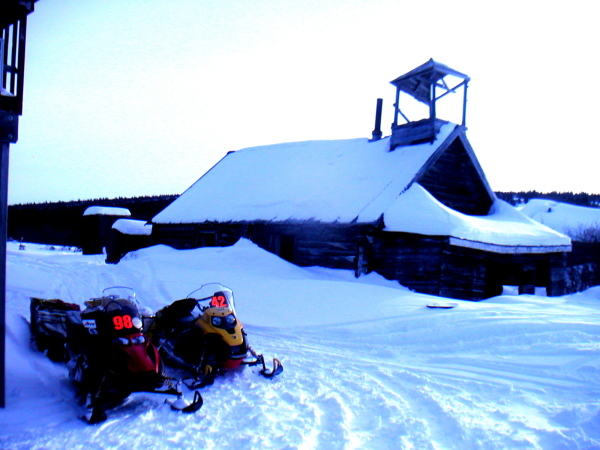
Photo Copyright © 2008 Ramon Gandia
Milepost 96
In 1896, Council was a gold rush town. When gold was discovered near Nome in 1898, the bulk of the population followed the gold. Over the years the town has waxed and waned. This is a picture of the one-room schoolhouse, boys and girls outhouses in back, etc., in use until 1978. I noticed some jerk already stole the school bell. We parked our machines under the stern shadow of the school and imagined the happy ghosts of long since dead children and teachers playing, laughing and learning.
Up Melsing to King Mountain [140]
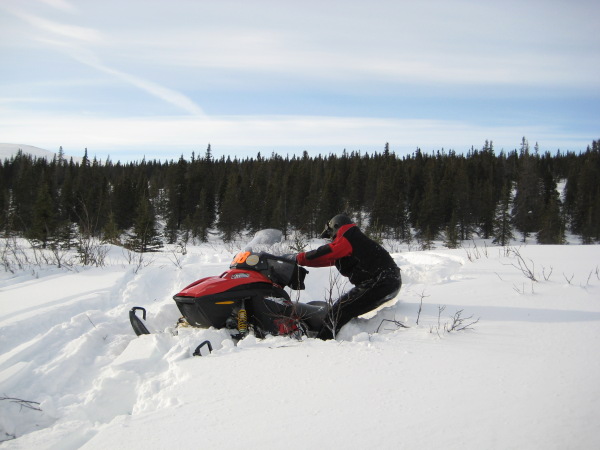
Photo Copyright © 2008 Ramon Gandia
Milepost 102
Kenny shows fine form in trying to lay his machine on its side so he can get it unstuck. We pioneered the trail up Melsing that was eventually used by support teams and mushers. The snow was waist deep, with deeper spots and holes where the creek could be seen.
Atop the Pass - King Mtn [020]
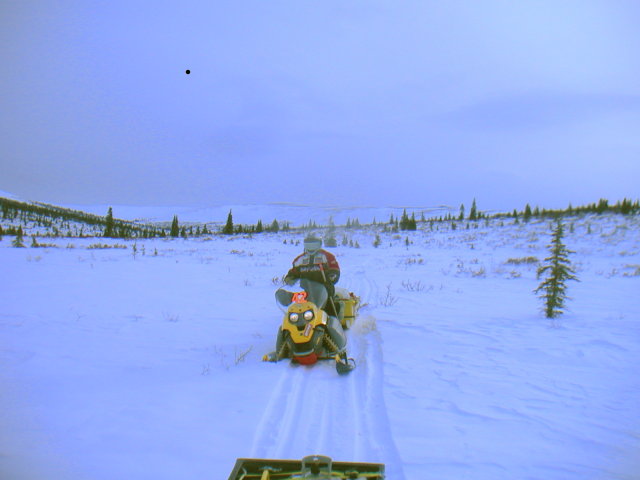
Photo Copyright © 2008 Ramon Gandia
Milepost 105
At the end of Melsing Creek we climbed about 1,500 ft to the top of a hill (part of King Mountain). Here I am on my Tundra, #42, and behind me downhill is the Melsing Creek valley.

